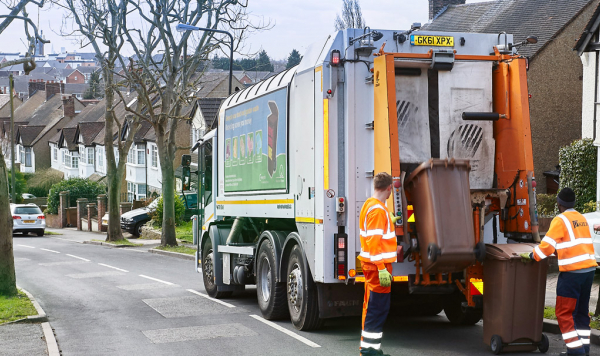Request
Request for the project to be paused for the following reasons:
Financial Impact
• Increased financial costs that have risen over time
• Exclusion of operating, environmental or public health costs.
• Council Tax
• Inefficient energy generation
• Possible new incinerator tax
Environmental and health Impact
• CO2 emissions
• Particulate matter
• Congestion and emissions from transporting waste to the site
• Lack of modelling
Incineration linked to low recycling rates
• North London's recycling rate has decreased and not met targets
Inadequate public consultation
• Expanded scope of the incinerator not re-consulted on
• Last physical consultation 2014
• Lack of communication from Council on new plans
Response
Dear Sir Iain,
I am writing to you regarding your deputation to the North London Waste Authority (NLWA) meeting on Thursday 25 June 2020. This was in relation to the North London Heat and Power Project (NLHPP). I would like to thank you for joining the meeting and setting out the issues you wanted to draw to Members’ attention. Following a thorough review of the proposed project, including the points raised in the deputations, I am letting you know that Members unanimously approved the start of procurement for the new Energy Recovery Facility (ERF).
As promised in the meeting, we are responding in writing to each deputation. I have outlined the key points you raised and provided a response for each below, to advise you of Members’ understanding of these issues in making their decision.
In your deputation you claimed that the financial costs of the Project have increased over time and ask that the costs are reviewed with emphasis on the environmental, societal and industrial impacts. You also alluded to a possible new incinerator tax and classed the energy generation from incineration as inefficient. We want to reassure you that the NLHPP is the most sustainable and cost-effective solution for managing north London’s non-recyclable waste in the future. The alternative treatment of landfilling waste has been costed at an additional £15 million to £26 million per annum from 2027. As well as being an unacceptable cost increase for residents, this would also undermine our efforts to tackle the Climate Emergency. The environmental and health costs are lower with our proposed facility than the landfill alternative as greenhouse gas emissions are lower and transport emissions are reduced as the waste is treated locally rather than being transported long distances to remote disposal facilities. It is also misleading to suggest that the Project costs have risen. In 2015, an indicative cost estimate was prepared which mainly focused on the ERF. In 2019, a detailed and robust cost estimate of £1.2bn was prepared in line with today’s prices, which also included updates to the Resource Recovery Facility (RRF) design, in line with the most modern specifications, as well as risk contingencies. The Authority carefully monitors Project costs and is actively working to minimise costs of borrowing. In 2019, the Project was successful in a bid for £100m of lower interest ‘Local infrastructure Rate’ borrowing from HM Treasury. The anticipated future levies have been modelled for boroughs so that they understand the impact on future council tax levels. With regards to a potential incineration tax, it has been enshrined in UK law for decades that energy recovery is preferable to landfill as a method of residual waste management and as a result, the UK Government has not introduced an incineration tax. Its Environment Bill (2019-2021) does not propose an incineration tax and if for any reason an incineration tax was introduced in the future, we expect that local governments would be compensated by central government. Landfill continues to be subject to a high, escalating tax every year, due to it being the least sustainable method of waste management.
With regards to the energy produced by the ERF, there is nothing inefficient about it. The ERF will produce efficient, low-carbon energy in the form of heat and power and this energy will be more carbon efficient than the energy supply it replaces (combined cycle gas turbine power plants). In doing so, our facility will support the transition to a carbon neutral economy. The GLA recently reaffirmed its support for our Project on the basis that it will provide combined heat and power, in line with the Mayor of London’s Environment Strategy.
In your deputation you also claimed that there has been a lack of modelling with regards to the Project and you also referred to the environmental and health impacts from incineration. Prior to submitting an application, comprehensive waste modelling was prepared for the DCO, which followed best industry practice. The modelling analysed forecast population growth and household income, as well as waste reduction and increased recycling in the future. This analysis was reviewed by an independent Planning Inspector, who recommended our Project for approval. Without this thorough and robust waste modelling the Project would not have been approved.
With regards to emissions, the NLHPP will save 210,000 tonnes of CO2 every year compared to landfill - which is like taking 110,000 cars off the roads every year. In addition, carbon emissions will also be saved by not having to transport waste outside of London, of which motor vehicles are a major contributor to London’s greenhouse gas emissions. Nationally the waste sector accounts for around 4% of UK greenhouse gasses and within this, the vast majority is caused by landfill-generated methane. In London, energy recovery accounts for just 0.75% of all greenhouse gas emissions. Public Health England is clear that modern, well run and regulated municipal waste incinerators are not a significant risk to public health. NLWA carried out an extensive Air Quality Impact Assessment for the Development Consent Order (DCO) which followed best practice for new energy recovery facilities. The published analysis shows categorically that no concentrations of pollutants from the facility will breach any air quality or public health standards. This includes the limits on particulates established by the European Union Air Quality Limit Values. The ERF will not release ultra-fine particulate matter that can’t be filtered. The ERF will use proven baghouse filters to capture and control particulates, that have been demonstrated to through numerous studies, to remove ultrafine particles. The UK Air Quality Expert Group, which advises the Government on air quality, is clear that modern ERFs are very effective at controlling particulates, and that there are multiple studies to back this up. Public health guidance is made on the basis of multiple studies and the associated weight of evidence. As a result of the ERF emission controls and the high altitude of discharge, the contribution of the facility to pollutant concentrations at ground level is small. For the large majority of the year, its contribution is effectively zero and the predicted concentrations are well below the limits of detection. It would only be for a few hours a year that the contribution of the ERF would be measurable and this would be at levels of less than 2% of the relevant air quality standard. In comparison, transport emissions typically are responsible for up to 29.6% of the particles in the atmosphere in Enfield, industry and commercial practices cause 11.2%, and biomass burning (including wood burning) causes 7.6% of particulate emissions in Enfield.
In your deputation you also claimed that incineration is linked to low recycling rates which will impact on recycling rates in north London. We want to reassure you that the ERF will not undermine recycling efforts. Energy recovery reduces the amount of waste sent to landfill, not the amount that is recycled. Energy recovery is a proven technology that is used by local authorities across the world and is best practise in Europe for countries who have achieved recycling rates higher than 50%. In the UK, this includes the London Borough of Bexley, South Oxfordshire and Stratford-upon-Avon. As part of the NLHPP we are investing £100m in building new recycling facilities to help boost recycling rates to 50%. This includes a Resource Recovery Facility with capacity to manage up to 135,000 tonnes of wood, plastic and metal every year. We are also building a new public reuse and recycling centre for the benefit of local residents. NLWA does more than any London waste authority to help our residents increase their recycling rates. We accept the widest range of items for recycling and our waste prevention activities are one of the most significant in the UK. In fact, the cost to Councils and subsequently the taxpayer is lower for recycling than it is for residual waste, so the incentive to maximise recycling has financial benefits, as well as environmental. Whilst we are doing our upmost to encourage residents to increase their recycling rates, it also requires greater action from government and producers, and we call on the Government for rapid and meaningful action.
In your deputation you claimed that an inadequate amount of public consultation took place on the Project and also suggested the scope of the ERF had been expanded and not consulted on. Extensive consultation was carried out prior to submitting the Development Consent Order (DCO) application, between November 2014 – June 2015 across all seven north London boroughs. This comprised a two-stage consultation process including 15 events and several meetings with community and statutory stakeholders. We also distributed newsletters to 28,779 properties within close proximity to the site and additional leaflets were left in community centres and libraries in all seven north London boroughs advertising the consultation events. NLWA hosted a website which included details of the consultation and advertised the events in the Enfield Independent, Haringey Independent and the Waltham Forest Guardian. Copies of the materials used in the consultation process can be found in the consultation report appendices here. The DCO was submitted to the Planning Inspectorate in October 2015 and following a public enquiry the Project was given consent by the Secretary of State in February 2017. During the public enquiry any person can assert their interest and their right to make representations about the application to the Inspectorate, whether this is to support or object the application. The DCO application would not have been accepted unless public consultation had been demonstrated and met requirements. NLWA continues its wide-reaching engagement on the Project. This includes a regular Community Liaison Group meetings, newsletters, Twitter and website updates and community roadshows. The scope of the ERF has not expanded. It was made clear during the DCO consultation that waste could be accepted by local businesses and other local authorities but only if the ERF has remaining capacity after dealing with north London’s waste.
The NLHPP is replacing a facility on the same site which has been operating for 50 years and is reaching the end of its life. We need to replace this facility to meet the Mayor of London’s self-sufficiency targets which requires London to be treating the waste it generates within London’s boundaries, not transporting it across the UK or abroad. Our new facility is recognised by the Mayor of London as a nationally significant piece of infrastructure for net self-sufficiency in London.
If you have any further questions about the Project or require any clarifications, I would be happy to answer them or arrange a briefing at a suitable time.
Yours sincerely,
Cllr. Clyde Loakes


